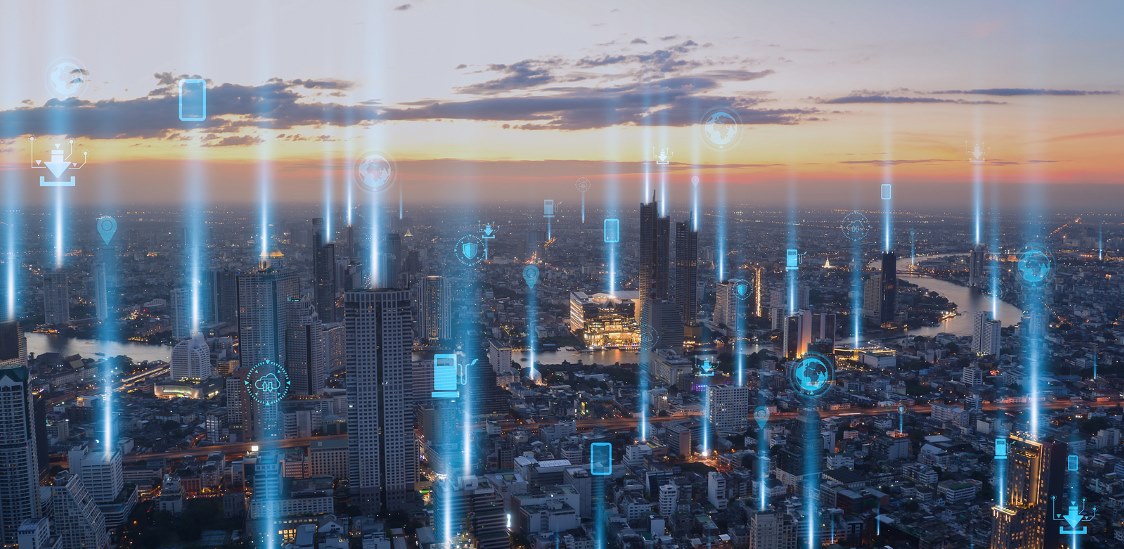In today’s ever-evolving IT landscape, the surge in data generation and the proliferation of IoT devices have created what we call a "hyperconnected world." The quest for speed and real-time connectivity has become a driving force across various industries and, today, everything is connected with information flowing faster than ever before.
For instance, imagine a world where your refrigerator autonomously replenishes groceries, your car schedules its own maintenance based on real-time diagnostics and city traffic lights adjust to optimize traffic flow in response to live conditions.
Traditional data processing models often involve sending data to a centralized cloud server for analysis and decision-making. While this approach has served us well, it comes with inherent latency issues, especially in applications requiring immediate responses. This is where edge computing steps in. By processing data closer to source, it eliminates the need to send it back to centralized data centers.
The edge of real-world innovation
Edge computing represents a pivotal evolution in IT infrastructure, catering to the need for speed in our hyperconnected world. It extends its influence beyond manufacturing and smart factories, shaping the future of retail shop floor experiences and contributing to the ongoing evolution of smart cities. It’s a powerhouse driving innovation across diverse realms from monitoring mental well-being to preserving the environment, revolutionizing healthcare, shaping the metaverse and fine-tuning precision agriculture etc.
Here’s a closer look at how edge computing is the driving force that is reshaping the landscape of boundless possibilities in today's world:
1. Nurturing minds: monitoring your mental wellbeing
“In an era where life unfolds at a rapid pace, edge computing serves as a silent guardian of mental well-being.”
Through the analysis of behavioral patterns, heart rate variability and other physiological markers at the local level, edge devices can detect early signs of stress, anxiety, or other mental health concerns. The focus on local processing ensures data privacy, enabling timely interventions or alerts. This vision presents a future where technology not only assists individuals but also actively contributes to the real-time care of mental health.
2. Preserving nature: keeping a watchful eye on environmental conservation
“It's a harmonious blend of technology and nature, where edge computing provides timely insights, optimizes resource use and promotes sustainability in data processing.”
Step into the realm of environmental conservation powered by edge computing. Deploying sensors and cameras in the field, edge devices facilitate real-time data processing, revolutionizing wildlife tracking, climate monitoring and ecological analysis. By minimizing reliance on centralized servers, edge computing reduces energy consumption and latency, fostering swift responses to environmental challenges.
3. Healing hands: a trusted ally in healthcare
“In the fast-paced world of medical practice, edge computing stands as a trusted ally, ensuring that every decision is informed by real-time, localized data.”
Within the walls of hospitals, edge computing emerges as an invaluable asset for efficiency and privacy. Processing data locally ensures the security of patient information, while delivering right-time notifications to practitioners offers insights into unusual patient trends or behaviors. The creation of 360-degree view patient dashboards provides practitioners with comprehensive visibility, elevating the quality of healthcare.
4. Building realities: from a conceptual idea to a tangible reality in the metaverse
“As the metaverse takes center stage, edge plays a pivotal role in crafting immersive virtual experiences.”
Edge devices meet the computational demands of tracking objects, characters, and environmental effects, ensuring seamless transitions in virtual spaces. Serving as the backbone, edge computing prevents degradation in image resolution and details, even in crowded virtual environments.
5. Cultivating the Earth: elevating precision agriculture practices
“Amidst the vast farmlands, precision agriculture thrives with the integration of edge computing, contributing to optimized crop yields and sustainable farming practices.”
By bringing computational capabilities closer to the data sources, edge devices analyze real-time data on soil conditions, crop health and weather. This localized processing minimizes latency, enabling immediate decision-making for tasks like adjusting irrigation and controlling machinery. The scalability of edge computing ensures that each section of a farm operates efficiently.
Edge computing is ushering in a future where innovation serves as a catalyst for positive change. It marks a profound shift in our technological landscape, propelling us into a hyperconnected era where speed, precision, and real-time responsiveness define new standards across industries. From nurturing our minds to cultivating the land, edge computing emerges as a transformative force, redefining the way we live, work, and connect.
The views expressed in this commentary belong solely to the author and do not represent The Fast Mode. While information provided in this post is obtained from sources believed by The Fast Mode to be reliable, The Fast Mode is not liable for any losses or damages arising from any information limitations, changes, inaccuracies, misrepresentations, omissions or errors contained therein. The heading is for ease of reference and shall not be deemed to influence the information presented.





















